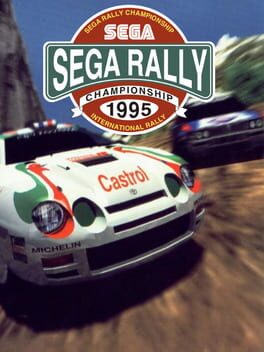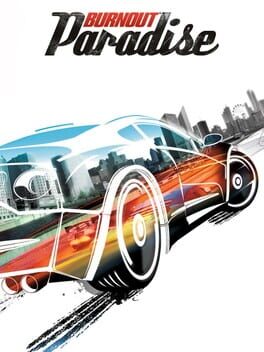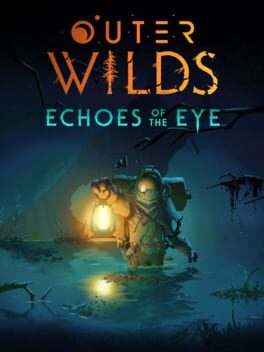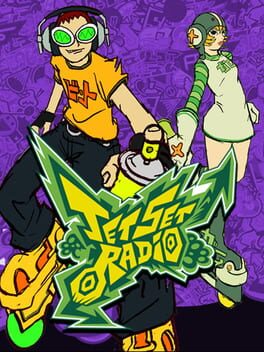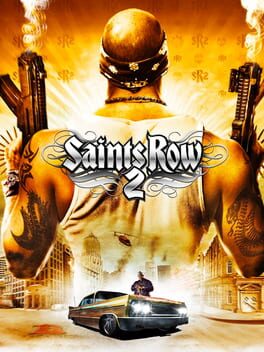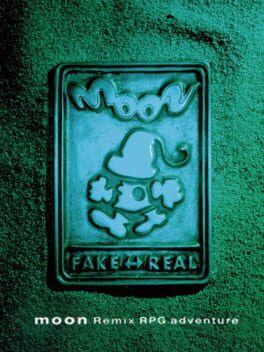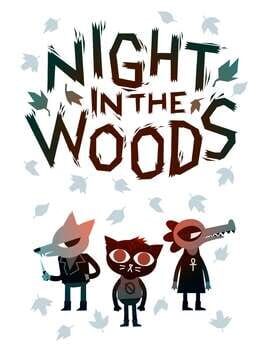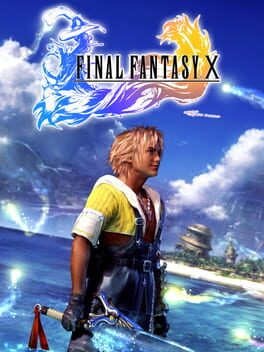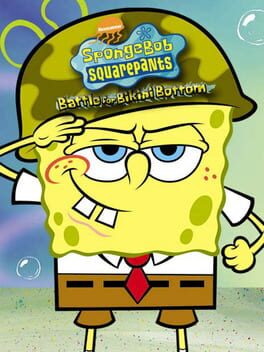nene7
33 reviews liked by nene7
Kenji Sasaki, the director of Sega Rally at one point in development worked so much on the project that he began questioning the very thought of finding driving "fun".
As a minnow you'll barely know how to drive a go-kart in Super Mario Kart, in comparison a fine-tuned high performance Toyota Celica GT-Four is well above your pay grade. You will start racing in the beginner-friendly Desert course just fine and dandy, until you try to make the very long easy right near the end and see yourself smacking head-first into the stone wall, sometimes even finding your curious eyes getting distracted by the zebras standing nearby. The Forest with it's pine trees welcome you to a hairpin turn that you have no hope of knowing how to handle in your weighty polygonal real world vehicle, and you barely find yourself making it to the end out of sheer luck. Then the apparent finale rears it's ugly head, an insurmountable Mountain with not only it's own hairpin turn, but many tricky curves, a long narrow turn leaving little room for error, and precise maneuvering through town. This is the end for you, this mountain cannot be conquered. You're left to zero knowledge of the hellish Lake Side extra course that lies beyond that mountain, home to narrow precision-demanding turns and chicanes that only true experts of the dirt may discover and have any hope of navigating.
You become enamored over how mean the mountain is, and find it's song mesmerizing through it's triumphant guitar riffs that feel like it's cheering you on. You're but a kid, but you try your best to figure out the science of operating a championship-grade motor vehicle. You only learn so much, even if you do get a bit better at the other portions of the track, a hairpin turn is still essentially a guaranteed crash. Despite an obvious skill plateau for your moronic self, you still find the game fun to play and come back to it just to hear it's cheery demeanor root for you. You've game over'd so many times, but it never feels bad, because the game only wishes to entertain and not belittle.
As an adult you come back to the same game with fondness, puzzled as to why you took so much leisure just driving by yourself in time attack. Was it really just the music? Was the Celica GT-Four just that cool of a car? You come back to the same course and struggle as you normally do, albeit this time with knowledge of how to decelerate and utilize the brake properly. You hug the inside of those corners, you get the drift around the hairpin without touching the embankment, and not a single wall is run into as you make the quick descend through town. That "cool part" of the music that you really liked is now suddenly the victory jubilee as you approach the finish line on the third and final lap. Addiction to the feel of the road sets in, and you find yourself beating the arcade mode and getting the esteemed honor to officially drive on the Lake Side course without the need of that code you found one time on your dad's shitty internet. The Stratos car also becomes yours, best of luck driver, you are now a true master and may access these dangerous assets at any time. You deserve it truly.
It's at this point we come back to Sasaki, who had taken a moment to drive his own car around the mountains to find his spark again to make good-ass driving games, he found the experience so exciting that he based the Mountain track on it and made the very same course that I loved and still do to this day. To transfer that experience to a video game and have it somehow resonate with a six-year old who is now a full grown adult that can handle that hairpin turn with relative ease is a true mark of brilliance, and why Sega Rally stands on it's own as the foundation of all rally racing games and possibly one of my favorite driving games ever made.
Hurrah to you Mr. Sasaki.
As a minnow you'll barely know how to drive a go-kart in Super Mario Kart, in comparison a fine-tuned high performance Toyota Celica GT-Four is well above your pay grade. You will start racing in the beginner-friendly Desert course just fine and dandy, until you try to make the very long easy right near the end and see yourself smacking head-first into the stone wall, sometimes even finding your curious eyes getting distracted by the zebras standing nearby. The Forest with it's pine trees welcome you to a hairpin turn that you have no hope of knowing how to handle in your weighty polygonal real world vehicle, and you barely find yourself making it to the end out of sheer luck. Then the apparent finale rears it's ugly head, an insurmountable Mountain with not only it's own hairpin turn, but many tricky curves, a long narrow turn leaving little room for error, and precise maneuvering through town. This is the end for you, this mountain cannot be conquered. You're left to zero knowledge of the hellish Lake Side extra course that lies beyond that mountain, home to narrow precision-demanding turns and chicanes that only true experts of the dirt may discover and have any hope of navigating.
You become enamored over how mean the mountain is, and find it's song mesmerizing through it's triumphant guitar riffs that feel like it's cheering you on. You're but a kid, but you try your best to figure out the science of operating a championship-grade motor vehicle. You only learn so much, even if you do get a bit better at the other portions of the track, a hairpin turn is still essentially a guaranteed crash. Despite an obvious skill plateau for your moronic self, you still find the game fun to play and come back to it just to hear it's cheery demeanor root for you. You've game over'd so many times, but it never feels bad, because the game only wishes to entertain and not belittle.
As an adult you come back to the same game with fondness, puzzled as to why you took so much leisure just driving by yourself in time attack. Was it really just the music? Was the Celica GT-Four just that cool of a car? You come back to the same course and struggle as you normally do, albeit this time with knowledge of how to decelerate and utilize the brake properly. You hug the inside of those corners, you get the drift around the hairpin without touching the embankment, and not a single wall is run into as you make the quick descend through town. That "cool part" of the music that you really liked is now suddenly the victory jubilee as you approach the finish line on the third and final lap. Addiction to the feel of the road sets in, and you find yourself beating the arcade mode and getting the esteemed honor to officially drive on the Lake Side course without the need of that code you found one time on your dad's shitty internet. The Stratos car also becomes yours, best of luck driver, you are now a true master and may access these dangerous assets at any time. You deserve it truly.
It's at this point we come back to Sasaki, who had taken a moment to drive his own car around the mountains to find his spark again to make good-ass driving games, he found the experience so exciting that he based the Mountain track on it and made the very same course that I loved and still do to this day. To transfer that experience to a video game and have it somehow resonate with a six-year old who is now a full grown adult that can handle that hairpin turn with relative ease is a true mark of brilliance, and why Sega Rally stands on it's own as the foundation of all rally racing games and possibly one of my favorite driving games ever made.
Hurrah to you Mr. Sasaki.
Burnout Paradise
2008
Balatro
2024
A surreal feeling struck me in my first time restarting a run of Balatro immediately after ending another almost successful one. Suddenly, all of the twisted rules that gradually seeped into my playstyle and mind reverted to their original blank slate. I noticed my instinct to seek out diamonds and straights which my previous jokers favored in my winning run and subsequent leap into endless mode. When I recognized that my recently game-over'd ways were no longer especially effective, there was a realization of how this game had hypnotized me into a fool. I had only gotten just a taste of this game's addictive nature; I would continue to be made a fool time and time again for hours upon hours.
The gently swaying UI, the steady rhythm of the soundtrack, and the exponentially snappy turns all bolster Balatro's enchanting attitude. Even I, with the majority of my poker experience only being with Luigi, found myself entranced in this spin on a card game I only vaguely admire.
This game has boiled down the familiar roguelite to one of its simplest yet most effective spells yet. If this game has piqued your interest, beware the intoxication.
The gently swaying UI, the steady rhythm of the soundtrack, and the exponentially snappy turns all bolster Balatro's enchanting attitude. Even I, with the majority of my poker experience only being with Luigi, found myself entranced in this spin on a card game I only vaguely admire.
This game has boiled down the familiar roguelite to one of its simplest yet most effective spells yet. If this game has piqued your interest, beware the intoxication.
Balatro
2024
Balatro
2024
Outer Wilds is a sort of detective game. You solve the universe one riddle at a time; narrowing great mysteries down to specific questions through curiosity and a good amount of deductive reasoning. Echoes of the Eye is its inductive counterpart, with all the implications that may carry.
(This review assumes very basic familiarity with the base game! I will avoid specific spoilers but lightly touch on tone and design ideas. I'd still recommend you go in blind. It's good.)
After a stellar start that feels perfectly at home in the base game, the dynamic quickly shifts: you're presented with obstacles first and then explore for the right tool to overcome them. It's the opposite of the way the original game conditioned you to think. Yes, you kept problems in the back of your mind so you could identify solutions in the wild, but it was far more frequent to come across new "tools" while still unaware of their intended use. You established a complex web of causality where every discovery would enable several new interactions and progress paths to dynamically hop between. Echoes' game design is a little disappointing to me because the structure of its puzzles calls back, instead, to LucasArts or Sierra adventures.
Its chokepoints are obvious (single barriers that halt all progress) and their solutions arbitrarily specific. Trying to find any given key involves a chain of extremely evocative findings that suggest a plethora of new ways to interact with the world but rarely go beyond the realm of the aesthetic. I wasted many loops making fruitless logical connections before it became clear I'd have to follow the "pair inventory object with environment ptompt" method of Silent Hills past, which ground me to a halt as I had to readjust the entire way I was approaching the expansion. Admittedly, it wasn't exactly like the former Proper Noun comparisons, but it did involve the sort of inference that requires skipping over the exact technicalities the original game would've built its own puzzles around. Also admittedly, the amount of solutions that depended on me not having a notable visual disability didn't make things easier.
What did make things easier was the jaw-dropping sense of atmosphere and tone. Echoes of the Eye is actually a horror game--one far more overtly narrative than the base experience. My dryly mechanical description up to this point has therefore been a lie by omission. Seen as a more traditional story-driven game, the wrinkles in its design start to make sense.
it's an issue of scope.
I haven't researched this in the slightest, but I imagine the story was concieved before any of the level design proper. The chokepoints are there to make a few important events impossible to miss, and the lack of information density around them, the reason discoveries feel more textural than consequential, is that the team just didn't have the time or resources to build something as complex. It's a little sad, but thinking about it helped me focus on what they did right, which is literally everything else.
So many of my favourite images in Outer Wilds come from this DLC. It's sometimes funny, sometimes cozy and frequently downright horrifying. It's esoteric in a way the original never dares to be and evokes not the primal fear of an uncaring universe, but haunting humanity. It's not a literal sequel to the base game, but it's very much a thematic one, and the ending is so cathartic that it has remained a mind-anchor over two days of holiday family antics. From that herculean feat alone, we can infer that Echoes of the Eye is at least Pretty Damn Good.
(This review assumes very basic familiarity with the base game! I will avoid specific spoilers but lightly touch on tone and design ideas. I'd still recommend you go in blind. It's good.)
After a stellar start that feels perfectly at home in the base game, the dynamic quickly shifts: you're presented with obstacles first and then explore for the right tool to overcome them. It's the opposite of the way the original game conditioned you to think. Yes, you kept problems in the back of your mind so you could identify solutions in the wild, but it was far more frequent to come across new "tools" while still unaware of their intended use. You established a complex web of causality where every discovery would enable several new interactions and progress paths to dynamically hop between. Echoes' game design is a little disappointing to me because the structure of its puzzles calls back, instead, to LucasArts or Sierra adventures.
Its chokepoints are obvious (single barriers that halt all progress) and their solutions arbitrarily specific. Trying to find any given key involves a chain of extremely evocative findings that suggest a plethora of new ways to interact with the world but rarely go beyond the realm of the aesthetic. I wasted many loops making fruitless logical connections before it became clear I'd have to follow the "pair inventory object with environment ptompt" method of Silent Hills past, which ground me to a halt as I had to readjust the entire way I was approaching the expansion. Admittedly, it wasn't exactly like the former Proper Noun comparisons, but it did involve the sort of inference that requires skipping over the exact technicalities the original game would've built its own puzzles around. Also admittedly, the amount of solutions that depended on me not having a notable visual disability didn't make things easier.
What did make things easier was the jaw-dropping sense of atmosphere and tone. Echoes of the Eye is actually a horror game--one far more overtly narrative than the base experience. My dryly mechanical description up to this point has therefore been a lie by omission. Seen as a more traditional story-driven game, the wrinkles in its design start to make sense.
it's an issue of scope.
I haven't researched this in the slightest, but I imagine the story was concieved before any of the level design proper. The chokepoints are there to make a few important events impossible to miss, and the lack of information density around them, the reason discoveries feel more textural than consequential, is that the team just didn't have the time or resources to build something as complex. It's a little sad, but thinking about it helped me focus on what they did right, which is literally everything else.
So many of my favourite images in Outer Wilds come from this DLC. It's sometimes funny, sometimes cozy and frequently downright horrifying. It's esoteric in a way the original never dares to be and evokes not the primal fear of an uncaring universe, but haunting humanity. It's not a literal sequel to the base game, but it's very much a thematic one, and the ending is so cathartic that it has remained a mind-anchor over two days of holiday family antics. From that herculean feat alone, we can infer that Echoes of the Eye is at least Pretty Damn Good.
Jet Set Radio
2012
Baldur's Gate 3
2020
Saints Row 2
2008
Saints Row 2
2008
I am fully aware how ridiculous this may sound, but I am being 100% serious when I tell you that this game's cutscenes, seemingly driven mostly by "hm, what would look the coolest here?", are better—and more thoughtfully—shot and edited than most other games I've played.
"But what about [prestige game]" especially better than that.
Despite the average shot length being too short for my taste, the cutscene where the Ronin attempt to ambush Johnny Gat and the player was when I realized "oh, someone DIRECTED this." Beyond the flashier stuff like the derivative-but-still-great katana flower-cutting discretion shot, there's a real sense of rhythm to the scene and thoughtfulness to the blocking (to say nothing of the physical comedy) that persists across all the other story cutscenes, once I started paying attention.
(Of particular note is the long take late in the Brotherhood arc, which I bring up not because long takes are inherently good or something—they're frequently misused pretentiously by people who don't understand what they're for—but because it's specifically there to create a vulnerable, scrambling feeling that underlines both the larger theme of the arc of powerful people feeling powerless and lashing out in petty destructive ways, and the immediate theme of Maero Is Bigger And Stronger Than Me Oh No.)
The fact that these cutscenes come out of an era in gaming that was still pretty dominated by "just vaguely point the camera at the action" is nuts.
Oh also the rest of the game's alright. It's extremely 2008 in good and bad ways. It's better than the HD GTAs by a country mile. It's hard for me not to compare its controls negatively to its sequel, since I played it first—jumping on cars to get in them without the animation is a salve, but doesn't compare to jumping directly into the driver's seat in SRTT—but obviously the tradeoff is that Stilwater is a better sandbox than Steelport.
(p.s. the female player character is sorta-canonically trans, which is fun)
"But what about [prestige game]" especially better than that.
Despite the average shot length being too short for my taste, the cutscene where the Ronin attempt to ambush Johnny Gat and the player was when I realized "oh, someone DIRECTED this." Beyond the flashier stuff like the derivative-but-still-great katana flower-cutting discretion shot, there's a real sense of rhythm to the scene and thoughtfulness to the blocking (to say nothing of the physical comedy) that persists across all the other story cutscenes, once I started paying attention.
(Of particular note is the long take late in the Brotherhood arc, which I bring up not because long takes are inherently good or something—they're frequently misused pretentiously by people who don't understand what they're for—but because it's specifically there to create a vulnerable, scrambling feeling that underlines both the larger theme of the arc of powerful people feeling powerless and lashing out in petty destructive ways, and the immediate theme of Maero Is Bigger And Stronger Than Me Oh No.)
The fact that these cutscenes come out of an era in gaming that was still pretty dominated by "just vaguely point the camera at the action" is nuts.
Oh also the rest of the game's alright. It's extremely 2008 in good and bad ways. It's better than the HD GTAs by a country mile. It's hard for me not to compare its controls negatively to its sequel, since I played it first—jumping on cars to get in them without the animation is a salve, but doesn't compare to jumping directly into the driver's seat in SRTT—but obviously the tradeoff is that Stilwater is a better sandbox than Steelport.
(p.s. the female player character is sorta-canonically trans, which is fun)
